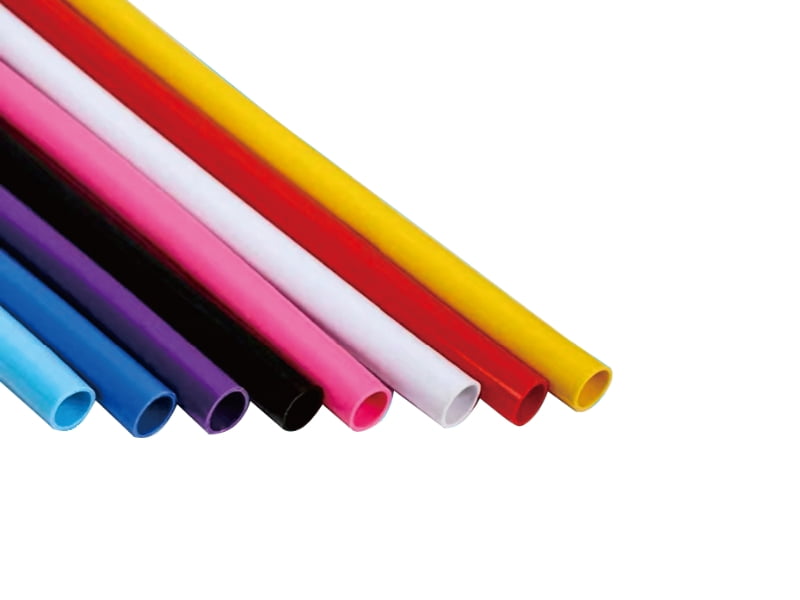PVC Pipe: Properties, Applications, and Maintenance
What is PVC Pipe?
Polyvinyl Chloride (PVC) pipe is a versatile thermoplastic piping material widely used in construction and industrial applications. PVC Pipes are manufactured through an extrusion process, resulting in a product with a smooth inner surface (with a typical surface roughness of 0.0015 mm) that minimizes friction losses. The material exhibits excellent chemical resistance with a pH tolerance range of 2-12, making it suitable for various corrosive environments.

Key characteristics of Pvc Pipes include:
Dimensional stability: Thermal expansion coefficient of 5×10⁻⁵ in/in/°F
Mechanical strength: Tensile strength ranging from 5,000 to 9,000 psi
Pressure rating: Standard Schedule 40 pipes can withstand 120-810 psi depending on diameter
Temperature resistance: Operating range from 0°F to 140°F (-18°C to 60°C)
Weight advantage: Density of 1.38-1.45 g/cm³, about 1/5 the weight of steel pipes
Flow characteristics: Hazen-Williams C factor of 150-155 for smooth laminar flow
Applications of PVC Pipes
The unique combination of properties makes PVC pipes suitable for diverse applications:
1. Water Supply Systems
PVC pipes dominate municipal water distribution due to their corrosion resistance and long service life (typically 50-100 years). Their smooth interior surface maintains a high flow capacity with minimal head loss, achieving flow velocities up to 5 ft/s in pressurized systems.
2. Drainage and Sewer Systems
PVC is the material of choice for sanitary sewer systems, with diameters ranging from 1.5 to 48 inches. The material's resistance to biological growth and chemical attack from wastewater (withstanding hydrogen sulfide concentrations up to 50 ppm) ensures long-term performance.
3. Electrical Conduits
PVC electrical conduits (typically gray in color) provide excellent dielectric properties with a volume resistivity of 10¹³-10¹⁵ Ω·cm. They offer UL-listed flame resistance with oxygen indices above 45%.
4. Industrial Process Piping
Chemical processing plants utilize PVC pipes for handling acids, alkalis, and salts. CPVC variants can withstand temperatures up to 200°F (93°C) with pressure derating factors applied above 140°F (60°C).
5. Irrigation Systems
Agricultural applications benefit from PVC's UV-stabilized formulations (with UV resistance up to 0.5% carbon black content) and flexibility in trenchless installation methods. Drip irrigation systems use small-diameter PVC pipes with precision emitters.
6. HVAC Applications
PVC drainage pipes in HVAC systems handle condensate removal efficiently, with thermal conductivity of just 0.14 W/m·K to prevent heat transfer. Their lightweight nature (weighing approximately 2.2 lbs/ft for 4" Schedule 40) simplifies installation in ceiling spaces.
Maintenance of PVC Pipes
Proper maintenance ensures optimal performance throughout the pipe's service life:
Installation Best Practices
Maintain proper bedding with compacted granular material achieving 95% Proctor density
Observe minimum bending radii (typically 300 times the pipe diameter)
Use solvent cement with appropriate set time (15-30 minutes for initial set)
Allow proper cure time (24 hours for full strength development)
Operational Maintenance
Conduct annual inspections for joint integrity using methods like dyed water testing at 5 psi
Clean interiors with non-metallic tools to prevent scratching (surface hardness of Shore D 70-80)
Monitor for UV degradation in exposed applications (annual surface hardness checks)
Flush systems quarterly to maintain flow capacity within 10% of design
Chemical Compatibility
While PVC resists most inorganic chemicals, avoid exposure to:
Aromatic hydrocarbons (benzene, toluene) at concentrations above 10%
Chlorinated solvents (trichloroethylene) at any concentration
Concentrated oxidizing acids (nitric acid above 40%)
Esters and ketones (methyl ethyl ketone, acetone)
Temperature Management
Implement controls to prevent:
Thermal shock (limit temperature changes to 30°F (17°C) per hour)
Freezing conditions (provide insulation below 40°F (4°C))
High-temperature exposure (install heat shields above 150°F (66°C))
Repair Techniques
For damaged sections:
Cut out defective areas with 45° bevel cuts for proper socket engagement
Use repair couplings with 1/8" gap for thermal expansion
For pressure applications, allow 48-hour cure before testing




 English
English

